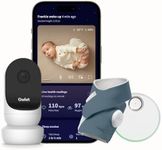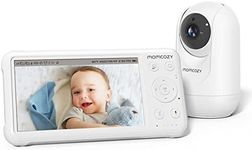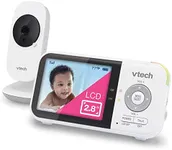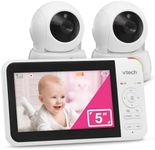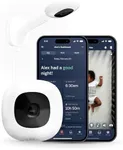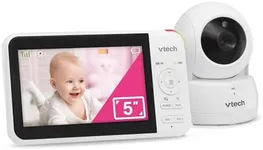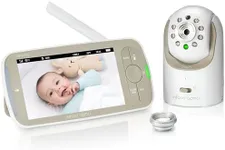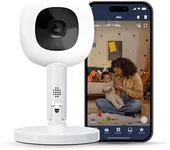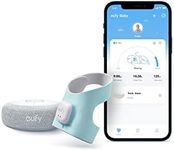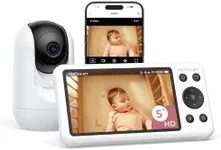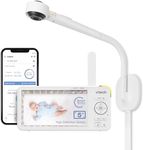Buying Guide for the Best Baby Monitors
Choosing a baby monitor is all about peace of mind and making sure you can keep an eye (and ear) on your baby, even when you’re not in the same room. The right monitor for you depends on your home setup, your comfort with technology, and what features will help you feel most secure. Think about how you’ll use the monitor day and night, whether you want to see, hear, or both, and how much you want to interact with your baby remotely. Understanding the key features will help you pick a monitor that fits your lifestyle and gives you confidence as a parent.Type (Audio vs. Video)The type of baby monitor refers to whether it transmits only sound (audio) or both sound and video (video). Audio monitors let you hear your baby, while video monitors let you see and hear them. Audio monitors are simpler and often have longer battery life, while video monitors provide more information and reassurance, especially if you want to check on your baby’s movements or sleep position. If you just want to know when your baby is crying, audio may be enough. If you want to see your baby at all times, a video monitor is the better choice.
RangeRange is the maximum distance the monitor can transmit signals between the baby’s room and the parent unit. This is important if you have a large house or want to use the monitor outside, like in the garden. Short-range monitors (up to 300 feet) are fine for small apartments, while medium-range (300–800 feet) suits most homes. Long-range monitors (over 800 feet) are best for large houses or if you want to go further from the baby’s room. Think about where you’ll be when using the monitor to decide what range you need.
Connectivity (Analog, Digital, Wi-Fi)Connectivity describes how the monitor sends signals. Analog monitors are basic and can be prone to interference, while digital monitors offer clearer sound and more privacy. Wi-Fi monitors connect to your home internet and let you check on your baby from your phone, even when you’re not at home. If you want simple, reliable monitoring, digital is a good choice. If you want to use your smartphone or be able to check in from anywhere, consider a Wi-Fi monitor, but be aware of the need for a secure internet connection.
Battery Life and Power OptionsBattery life tells you how long the monitor can run before needing a recharge or new batteries. Some monitors plug into the wall, while others use rechargeable or replaceable batteries. Longer battery life is important if you want to move the parent unit around the house or use it overnight without charging. If you plan to keep the monitor in one place, power cords may be fine. If you want portability, look for a monitor with a strong battery life.
Night VisionNight vision is a feature in video monitors that lets you see your baby clearly in the dark. This is important for nighttime monitoring, as you don’t want to disturb your baby with lights. Some monitors have better night vision than others, showing a clearer picture in low light. If you plan to use the monitor mostly at night or in a dark room, make sure it has good night vision capabilities.
Two-Way TalkTwo-way talk allows you to speak to your baby through the monitor, which can be soothing for them and convenient for you. This feature is helpful if you want to comfort your baby without going into the room or if you want to talk to a caregiver in the nursery. If you think you’ll use this feature, look for a monitor that offers clear two-way audio.
Additional Features (Temperature Sensor, Lullabies, Alerts)Some monitors come with extra features like temperature sensors to alert you if the room gets too hot or cold, built-in lullabies to help soothe your baby, or movement and sound alerts. These features can add convenience and peace of mind, but may not be necessary for everyone. Think about which extras would actually make your life easier and focus on those when choosing a monitor.
